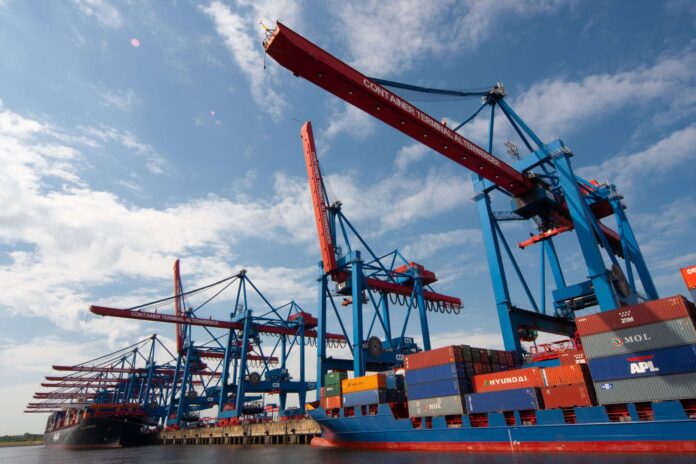
Photo by Kurt Cotoaga on Unsplash
Many businesses are facing critical stock shortages due to supply chain disruption. Logistics expenses and production shortages are a growing concern for many industries, yet many companies appear slow to adapt to these changes. It remains to be seen just how dramatic the full impact of these shortages will be in the future. In order to dive a little deeper into the subject, we’ve investigated the causes behind these drastic changes, how these dynamics have impacted supply and demand, as well as the steps companies, are taking to alleviate the potential strain on both profits and efficiency.
Cause and effect
Numerous supply chain issues have led to rising expenses for a large majority of companies, leaving these job suppliers short of product inventory and/or manufacturing capability. Due to the fact that these supply chains are overwhelmed, many businesses are unable to meet market demands, particularly for the upcoming holiday season. The main concern put forth by financial experts is that most companies haven’t had time or resources to prepare themselves adequately. This will inevitably lead to multiple consequences as these businesses find it difficult or even impossible to obtain much-needed stock items.
As with most large-scale crises, it’s taken a combination of different detrimental effects for this situation to occur. For example, working from home has led to increased sales for leisure clothing brands. However, due to many of these brands having outsourced manufacturing processes, countries with strict lockdowns have been unable to meet the demands of buyers. The consequences of these supply chain shortages are as varied as they are numerous, affecting all industries and any product sales. These negative effects include inflation, panic buying, and stock shortages.
Strain on trade
Ports in the US are operating at maximum capacity, meaning that increased demand for supply will likely be impossible to meet. Logistics companies are experiencing a profitable uptick in demand, but warehouses are short on stock, and the aforementioned ports are simply too congested to maintain a higher rate of import/export. Drastic changes in weather patterns not only affect sea routes but overland trade as well. Under these conditions, demand for certain product types will not be able to be met before the end of the year.
Some of the largest supermarket chains have confirmed that price hikes are a likely outcome if the situation can’t be remedied timeously. Consumers are already facing price increases due to elevated shipping costs, with some regional pricing going up by as much as 500%.

Photo by jesse ramirez on Unsplash
Impact on consumers
Unfortunately, increased operating costs often trickle down to the end-user. Over the last year, US consumer prices have risen to their largest annual increase since 2008. Computer-chip shortages have caused decreased production in car manufacturing, smartphone production, and various tech-related industry deficits. Video gaming, the world’s largest entertainment industry, has been impacted to a large degree due to graphics card prices going through the roof in the last year, and there are no signs of these products dropping in price, at least anytime soon.
In order to offset the volatility of current supply lines and mitigate the threat of empty shelves, three primary strategies are being employed by the majority of companies, namely price hiking, local production, and central supply chains.
Price hikes
Freight rates and logistical expenses are the highest they’ve ever been. Courier and carrier companies are reaping the benefits of this increased demand. For instance, according to numerous sources, shipping giant Maersk reportedly expects record-breaking profits this quarter. However, with shipping lanes and freight terminals at maximum capacity, there’s a potential bottleneck approaching that analysts fear might snowball all too quickly.
Schools are facing shortages of various food and drink items; cafeterias are having to make do with supplies on hand and stretch out resources. On-shelf availability at supermarkets is trending downwards. Disruptions are random in that there is no logical consistency to these shortages, be it geographical or otherwise. The fact is that almost every product or service relies on the transportation of goods.

Photo by Bannon Morrissy on Unsplash
Local production
One solution is for companies to centralize their supply chains and migrate from import to local produce, though that takes time and preparation. Not all products will bear the brunt of supply shortages. The footwear industry has increased its import rate by more than double that of last year, meaning that they are better prepared for the end of the year than most other industries.
Adaptive or agile business strategies mitigate the need to depend on a volatile supply chain. These strategies might require a shift in services rendered or products offered. If a company hasn’t already completed their supply orders for the end of the year, it’s highly unlikely that they can expect to stock their shelves for Christmas.
Walmart and other large chains have already confirmed price increases for various products. A wide range of common food and grocery items are likely to rise in price, putting a strain on the economy and a knockback effect on world trade. To alleviate this problem, companies are warning that late gift-shopping and last-minute celebration plans will cause more grief than they’re worth.
Central supply chains
Though the pandemic was the chief cause behind these catalytic changes, it is no longer the main problem. Low global vaccination rates, different levels of lockdown, and transformative industrial processes are all contributing to the congestion of supply chains. Natural disasters, cultural transformation, and global conflicts also play their part in these shortages. By shifting from international to local production, businesses can avoid the troubles of busy shipping lanes and rising logistics expenses.
On the bright side, these disruptions provide ample opportunity for sustainable business practices to prosper. Overall, the general consensus seems to be that incoming high inflation rates will only be temporary. The Federal Reserve Bank, European Central Bank, Bank of Japan, and Bank of England have all stated that supply chain disruptions should eventually dissipate as early as February of 2022.










